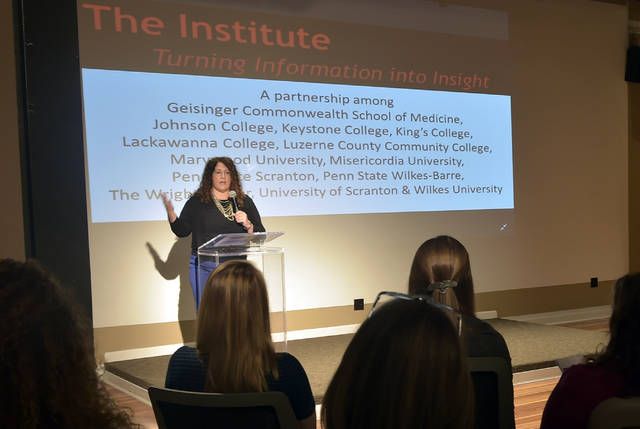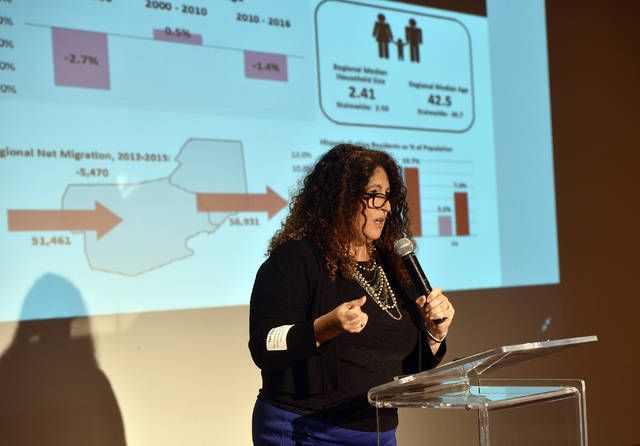If predictions hold true, there won’t be enough workers in Luzerne and Lackawanna counties to fill more than 10,000 jobs in a myriad of sectors over the next decade, researcher Teri Ooms told business leaders Wednesday.
While job growth is a contributor, most of the vacancies are expected to stem from older employees leaving the workforce, said Ooms, executive director of The Institute for Public Policy & Economic Development at Wilkes University.
The two-county population declined 1.4 percent from 2010 to 2016, while the annual unemployment rate in both averaged 4 percent from 2008 to 2017, according to her presentation at Wilkes-Barre’s Think Center in downtown Wilkes-Barre, which was held in partnership with the Greater Wilkes-Barre Chamber.
Competition for workers may create an “incredible bidding war to get people in the door,” she warned, noting employers also might consider allowing telecommuting and other incentives as an alternative to higher wages.
“It will become more of an employee market,” Ooms said, citing the recent example of Amazon nationally raising its minimum hourly wage to $15. “It’s going to become more competitive. I’m sure many of you are seeing some of that already, and it’s going to get worse.”
Some wage growth is warranted because there is still a “big disparity” in area wages compared to statewide averages, Ooms said.
The average individual annual pay in 2016 was $41,324 in Luzerne and $40,285 in Lackawanna, compared to $52,460 in Pennsylvania. With inflation adjustments, the pay increased 4.6 percent in the state from 2007 to 2016 but 3.1 percent in Luzerne and 3.9 percent in Lackawanna, she said.
This partially reflects the region’s cost of living, but the gap is still too large, she said.
Her organization has tracked a growing population considered the “working poor,” which refers to people who are above the poverty level but not earning a living wage needed to cover basic living expenses — lodging, food, medicine, transportation and child care.
“That’s something we need to deal with,” Ooms said.
Lower compensation places more burden on taxpayer-funded government assistance programs and social service organizations and may discourage some from working full-time, Ooms said.
She encouraged regional efforts to address labor shortages on many fronts, including:
• Encouraging more area residents to pursue vocational training requiring special certification or an associate’s degree.
Enrollment in career technical centers in the two counties decreased from more than 2,900 in both 2015 and 2016 to 2,700 in 2017, her report said.
• Continuing to beef up and change the image of public transportation, in part to attract residents who are willing to work but cannot afford their own vehicles.
• Building a brand identity for the region emphasizing its assets.
• Attempting to employ 40,394 residents of the two counties who travel outside their home county to work. Some are Luzerne residents working in Lackawanna, and vice versa, but Ooms said both counties are losing labor to other areas.
• Pushing to retain more of the approximately 7,700 annual graduates of the 15 higher education institutions in the region.
‘Give us a head-start’
Ooms’ organization was formed through a partnership between higher education and the business community to perform research and issue recommendations to improve the region.
Wico van Genderen, the chamber’s chief executive officer, said Ooms and her staff simplify complex data to help business leaders with economic development planning.
“The work of The Institute helps us to understand the economic impact of our businesses and at the same time helps us to target issues looming on the horizon to give us a head-start on executable actions to grow the opportunities and mitigate the risks,” he said.
Maximizing the labor pool is essential, van Genderen said, because another 4 to 5 million square feet of additional business space is expected to be added within three years, with the potential for 3,500 to 4,500 additional jobs.





